
Korea Women Inventors Association: Promoting the Business of Women’s Innovation
By Kim Soonsun, President of KWIA, Seoul, Republic of Korea
Thirty years ago in 1993, a handful of women inventors with a vision came together to establish the Korea Women Inventors Association (KWIA). Their purpose? To shine a light on the significant contributions that women inventors make to society, and to offer new generations of women an opportunity to generate income through their inventions with effective use of intellectual property (IP) rights.
In its early years, KWIA focused on building its network of women inventors and supporting their work. However, in 2001, when KWIA joined ranks with the Korean Intellectual Property Office (KIPO) in rolling out the Women Invention Promotion Project, its profile, reach and impact rose to a whole new level. Today, KWIA’s mission is to “promote women’s ideas everywhere.”
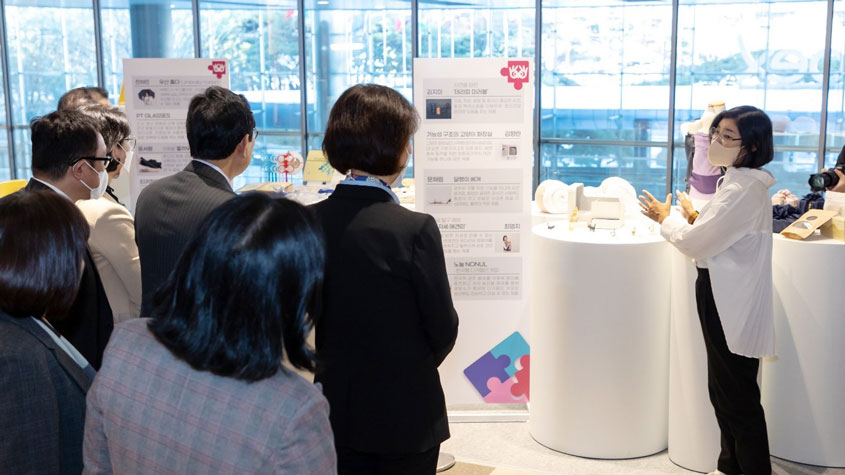
Programs to support women inventors
The Women Invention Promotion Project highlights the important contribution that women inventors make to society and seeks to encourage more women to engage in innovation. It also aims to enable women to take full advantage of the economic benefits that can flow from using IP rights. The project gives participants an opportunity to gain the knowledge, insights and skills they need to develop and commercialize their inventions successfully. This includes step-by-step guidance on how to use IP rights to protect and leverage the value of their inventions in the marketplace.
KWIA also runs four other flagship programs: the Women Inventors Creativity Class, the Women’s Ideas Everywhere program, the Korea International Women’s Invention Competition and the Korea International Women’s Invention Exhibition, which is held in conjunction with the Korea International Women’s Invention Forum.
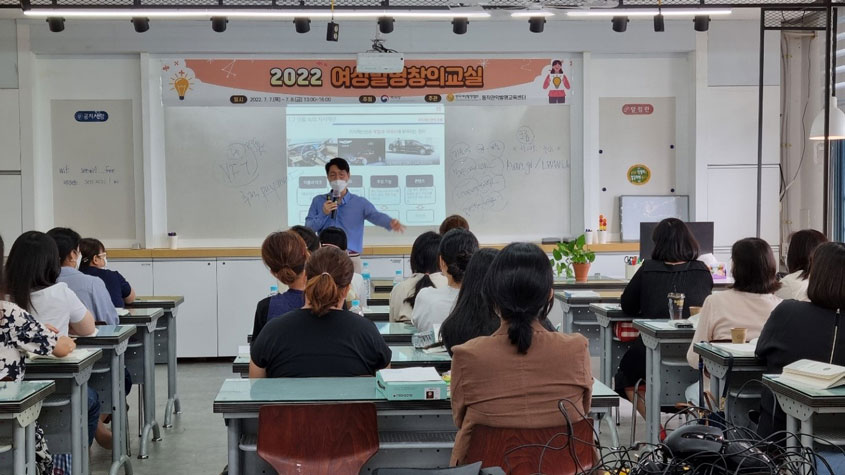
Through its Women’s Ideas Everywhere program, KWIA offers participating women support in terms of expert mentoring, making prototypes, and applying for IP rights to protect their work. These practical support services enable participants to tackle and overcome any future IP-related challenges as they progress on their entrepreneurial journey.
So far, KWIA’s programs have enabled more than 2,200 women every year to advance their innovation journeys.
KWIA’s Annual International Women’s Invention Competition is an opportunity for entrants to have their ideas evaluated by an expert panel of IP attorneys, academics and marketing professionals. Top entries win a place at the Korea International Women’s Invention Exhibition, which is an excellent opportunity for them to not only to win awards but to promote and market their inventions.
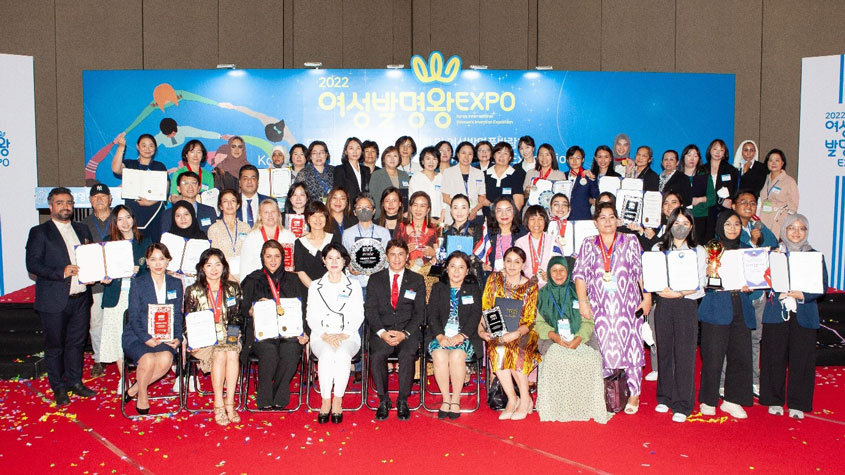
Women’s engagement is on the rise
So far, KWIA’s programs have enabled more than 2,200 women every year to advance their innovation journeys. Many have become serial inventors and entrepreneurs with thriving businesses. These important initiatives have also led to a tangible increase in women’s engagement in the IP system. This is reflected in the increasing number of Korean women who are applying for IP rights.
IP applications by gender
| Gender | 2017 | 2018 | 2019 | 2020 | 2021 |
|---|---|---|---|---|---|
| Men | 114,805 | 121,110 | 126,322 | 139,134 | 139,658 |
| Women | 36,698 | 40,852 | 47,235 | 55,708 | 62,402 |
| Total (Ratio of women) | 151,503 (24.2%) | 161,962 (25.2%) | 173,557 (27.2%) | 194,842 (28.6%) | 202,060 (30%) |
Figure 1: Numbers of IP applications submitted to the Korean Intellectual Property Office (KIPO) by gender. (Source: Intellectual Property Statistics for 2022, KIPO)
Fostering business growth
Lim Sujin, a participant in the 2018 edition of KWIA’s Women’s Ideas Everywhere Program came up with the idea of a “DIY Fake Wall” for use in rental accommodation where space is limited.
While developing and improving her prototype, Lim Sujin decided she wanted to turn her idea into a marketable product. “KWIA’s program was a great opportunity for me. It gave me the information, support and confidence – and the IP rights – I needed to be able to turn my idea into a business. Through the program I was able to secure a patent, which will help maintain my competitive advantage in the market as I grow my business,” Lim Sujin explains.
Following the program Ms. Lim benefitted from a government-funded pre-startup package, which helped her take her invention to the market. Since its launch in 2020, Lim Sujin’s DIY Fake Wall has been installed in over 1,000 locations and her IP-based startup is showing great promise for future growth.
Becoming an inventor: the answer to the challenges women face?
In the Republic of Korea, many women in their thirties struggle with the consequences of taking leave from their careers because of childbirth and/or other caring responsibilities. Employment rates for women generally peak when they are in their twenties. They then tend to drop rapidly when they are in their thirties and gradually rise again when women are in their forties, as shown in Figure 2 (below).
Female employment rate by age in 2021 (Korea vs. OECD)
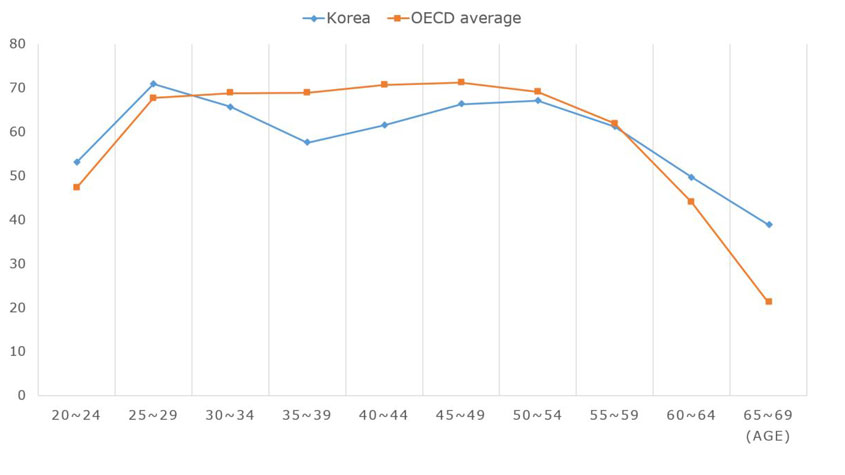
We’re creating new opportunities for women to break free from the constraints of the labor market and become independent inventors with the IP knowledge and skills they need to turn the ideas into viable business opportunities.
Moreover, the jobs women are able to secure in their forties are typically of a lower level than those they held before taking a break from their career. This is also the case among highly educated women. It is hard to see how these trends will ever change without government intervention.
KWIA is helping women overcome this challenge through our invention promotion activities. Through our programs, we’re creating new opportunities for women to break free from the constraints of the labor market and become independent inventors with the IP knowledge and skills they need to turn the ideas into viable business opportunities.
Creating opportunities for women globally
KWIA is the world’s first association for women inventors. For the last three decades, we have been working tirelessly to promote the significant contributions that women make in terms of developing new technologies and products that improve our lives. We will continue to play an active role in supporting women inventors globally, through both our training programs and our international network, which enable women to grow and develop and to share their knowledge and experiences.
We are thrilled that this year’s World Intellectual Property Day campaign is focusing on women and IP. While in recent years, we have seen some upward movement in the number of women using the IP system to safeguard their inventions, progress is slow. We need to redouble our efforts to encourage more women to get involved in the business of innovation and to ensure they have sufficient knowledge of IP rights to turn those innovations into business ventures that thrive.
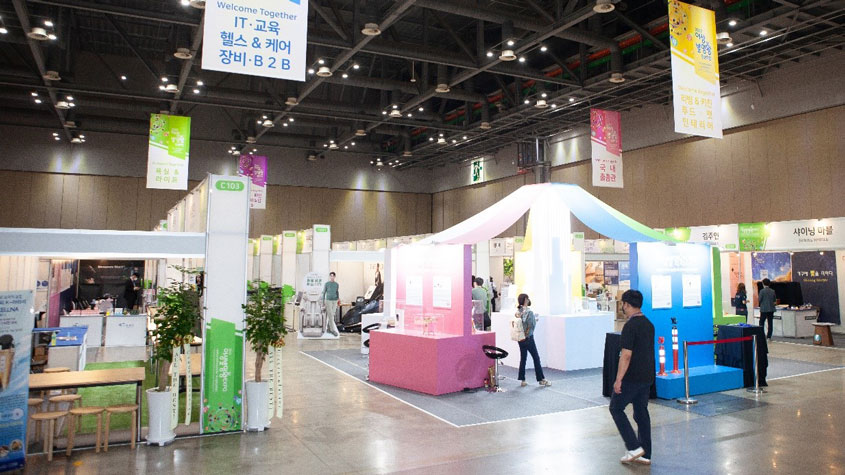
We need to redouble our efforts to encourage more women to get involved in the business of innovation…
For our part, in July 2023, for the first time in four years, KWIA will host the Korea International Women’s Invention Forum as an in-person event. This will be a wonderful opportunity to add new impetus to our efforts to expand and strengthen our international network of women inventors and to share KWIA’s vision for the future.
We are delighted to be able to re-unite our global community of women at this year’s forum and to showcase outstanding inventions by women at the 2023 Korea International Women’s Invention Exposition. Let’s continue to work together to support women inventors around the world for the benefit of everyone, everywhere.
The WIPO Magazine is intended to help broaden public understanding of intellectual property and of WIPO’s work, and is not an official document of WIPO. The designations employed and the presentation of material throughout this publication do not imply the expression of any opinion whatsoever on the part of WIPO concerning the legal status of any country, territory or area or of its authorities, or concerning the delimitation of its frontiers or boundaries. This publication is not intended to reflect the views of the Member States or the WIPO Secretariat. The mention of specific companies or products of manufacturers does not imply that they are endorsed or recommended by WIPO in preference to others of a similar nature that are not mentioned.